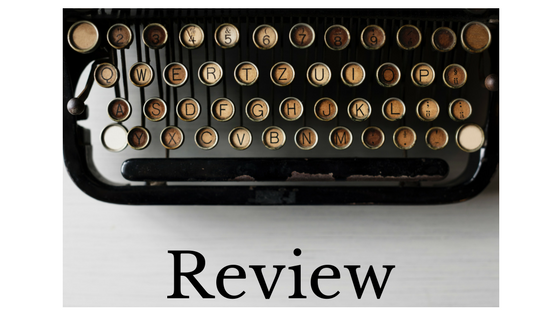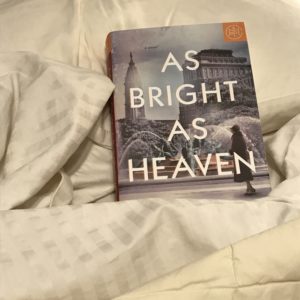I received a bound galley ARC of this book from DoubledayBooks as part of a sweepstakes. I’m grateful to Doubleday for their generosity and, because I enjoyed the book, was happy to post this honest review. All opinions are my own.
 If I tell you what happened that night in Ekaterinburg I will have to unwind my memory—all the twisted coils—and lay it in your palm. It will be the gift and the curse I bestow upon you. A confession for which you may never forgive me. Are you ready for that? Can you hold this truth in your hand and not crush it like the rest of them?…But, like so many others through the years, you have asked:
If I tell you what happened that night in Ekaterinburg I will have to unwind my memory—all the twisted coils—and lay it in your palm. It will be the gift and the curse I bestow upon you. A confession for which you may never forgive me. Are you ready for that? Can you hold this truth in your hand and not crush it like the rest of them?…But, like so many others through the years, you have asked:
Am I truly Anastasia Romanov? A beloved daughter. A revered icon. A Russian grand duchess.
Or am I an imposter? A fraud. A liar. The thief of another woman’s legacy.
That is for you to decide of course…You will have your answers. But first you must understand why the years brought me to this point and why such loss has made the journey necessary. When I am finished, and only then, will you have the right to tell me who I am.
Lawhon’s Past Work and I Was Anastasia
I was a fan of Lawhon’s last historical fiction offering, The Wife, The Maid, and the Mistress—enough so that I picked up her first Flight of Dreams. Flight of Dreams, however, has not yet made it off the TBR. If you’re a bookish person, I feel like that should accurately convey my feelings about Lawhon. If that means nothing to you, suffice to say I really like Lawhon but I don’t love Lawhon. The hang-up for me, I think, was that it felt at times like Wife/Maid/Mistress dragged a tiny bit towards the end and I wanted to get moving.
I Was Anastasia was a book I wanted to move quicker, not for the writing this time, but because it was hard to wait to see what would happen next. Of the two I’ve read, this is my favorite and it’s bumped Flight of Dreams up my list.
Structure
The structure of I Was Anastasia is non-standard to say the least. The book follows Anastasia Romanov from the time of the royal family’s removal from their home in Tsarksoe Selo to the massacre in Ekaterinburg* and Anna Anderson, the most well-known (and well-accepted during her time) woman who claimed to be Anastasia Romanov. The book flips back and forth between the two with Anderson’s chapters being longer since she’s covering decades where Anastasia chapters cover approximately sixteen months from start to finish—a pity because I wanted more Anastasia but I understand this would be an impossible feat.
Anastasia’s chapters move forward in strict chronological time and typically pick up close to where the last chapter left off, where Anderson’s chapters begin in 1970 and work backwards, jumping many years in between chapters. Lawhon’s author’s note (which you absolutely should not read until the book is over) indicates that she read all of the Anderson biographies that informed her novel backwards. This backwards-telling works in Lawhon’s hands—it could have been a train wreck, but Lawhon did an excellent job at making sure that when something was introduced for the first time, whatever the reference was wasn’t jarring and then you discovered the origin of whatever it was in the immediately following Anderson chapter while it was still fresh on your mind. I particularly enjoy non-standard devices like this or like Freshwater’s stream-of-consciousness-y Ogbanje narrators so the chronology didn’t bother me. A few other readers who received ARCs commented on Instagram that it took them a bit to get into the narrative because of this structure but those that stuck with it indicated they got used to it pretty quickly and were enjoying the book.
Tension
One of the elements that made this structure work so well was the tale’s naturally increasing tension and Lawhon’s skillful exploitation of this tension. As Anderson moves backwards we come closer and closer to finding what it was that made her jump off a bridge in 1920—the act that set her on course to be identified as Grand Duchess Anastasia—and what exactly happened at Ipatiev House in Ekaterinburg. Anna’s story becomes more dramatic the farther back in time you go with her, including being institutionalized in a psychiatric institution twice so her story has its own tension. You also know that the entire royal family (maybe including Anastasia, maybe not) is going to be brutally murdered at the end of the book where the stories come together—you dread this intersection and yet you can’t wait for it to happen.
Ignorance was helpful
Though I was a history major with a focus on eastern Europe, I managed to somehow escape taking Russian history (I can tell you some stuff about Poland and the former Czechoslovakia tho.) So while I had heard of Anastasia (most likely from the animated 1997 movie featuring the voices of Meg Ryan, Angela Lansbury, John Cusack, and Kelsey Grammer), I had no clue whether she actually did or didn’t survive and, if not, whether her body had been found. If you have a similarly convenient hole in your knowledge, I would encourage you to refrain from filling it before reading I Was Anastasia. This is one of the few times I would ever say this, but not knowing if Anderson was Anastasia or not (or even if the question had been completely settled) increased the tension of the book. Lawhon does tell you the truth and where she took liberties in her Author’s Note so have no fear that you will have the wrong information once the book concludes.
Problems?
Reading I Was Anastasia made me interested in the real Romanovs and, fortuitously, Anne Bogel did a “book flight” match up last week saying that if you enjoyed I Was Anastasia, you could check out The Romanov Sisters from by Helen Rappaport (she also suggested reading Dreamland Burning along with Killers of the Flower Moon. What can I say—great minds think alike.) I’ve started The Romanov Sisters and I’m enjoying it so far. However, I’ve also strayed a little beyond Rappaport since the repeated references to Nicholas II (Anastasia’s father) as “Nicholas the Bloody” left me with some questions that weren’t answered in I Was Anastasia and, thus far, haven’t really been addressed in Rappaport.
Apparently, Nicholas II earned this apt nickname by putting down political protest (Bloody Sunday in January 1905, the resulting attempted Russian Revolution of 1905, executions of political opponents) and instituting anti-Semitic pogroms. It is unlikely that Anastasia, as a seventeen year old girl, would have had any involvement in anything political her father did. It would have been bizarre to incorporate any of this into the story about a seventeen year old girl, but…it’s also hard to ignore this side of a minor character with significance to Anastasia that went completely unaddressed.
Ultimately, I Was Anastasia raises questions for me about what stories we tell and what we chose to say about them. Because Nicholas the Bloody was merely “Papa” to Anastasia, he’s presented as a doting father (probably true based on the correspondence quoted thus far in The Romanov Sisters) and victim of the 1917 Bolshevik revolution. These things can be true but since people are not ever just one thing, it can also be true that he was violently anti-Semitic and caused the deaths of scores of his own people as well as scores of Japanese during the ill-advised Russo-Japanese War. If I have any significant criticism of this book, it is that this reality should arguably have been included in the author’s note. It wasn’t directly relevant to the book (though it goes at least part of the way to explain why the revolution and resulting massacres happened) but if white authors do not at least acknowledge the atrocities committed by historical figures like this, then the result is white audiences left with the sense of Nicholas as a victim, a problematic conclusion.
Recommended
I recommend I Was Anastasia for fans of historical fiction or “women’s fiction.” (Ugh, again, for that category title.) The characters are compelling and the structure is different but not so unusual that it should be a turn-off. By telling the story the way she does, Lawhon makes you feel for Anderson, makes you want her to be Anastasia. I appreciate a skillful author who can make you feel for someone who may not be innocent.
Notes
Published: March 27, 2018 by Doubleday Books (@DoubledayBooks) available for pre-order now
Author: Ariel Lawhon (@ariel.lawhon)
Date read: March 17, 2018
Rating: 3 3/4 stars
*Because Russian uses the Cyrillic alphabet and there’s no one accepted transliteration for many of the letters, there are many different ways to spell many of the Russian names, places, and words used in I Was Anastasia. I typically stuck with those chosen by Lawhon, though as I’m reading The Romanov Sisters, they aren’t necessarily the ones chosen by Rappaport. (Highlighting the continued disagreements.)


 Timing
Timing
 Synopsis
Synopsis The boy’s eyes flew open.
The boy’s eyes flew open. On audio, however, this format works significantly less well. The citations for the historical sources break up the flow of the audio so frequently but so quickly that they become confusing. After the first cite, the citation for an historical source simple becomes “Author, op. cit.” In the written book (as you can see to the right), it’s fine. The eye can skim past with little interruption. In the audio, a different voice reads the citations so that seemingly out of nowhere the voice of what sounds like a preternaturally calm flight attendant interrupts the story to say “Leech, op. cit” and before you can wrap you head around what she just said, the next reader is talking and reading the next quote. The voice is jarring enough that it can’t easily be ignored and, as a result, I’m sure I missed much of the first several chapters of the book.
On audio, however, this format works significantly less well. The citations for the historical sources break up the flow of the audio so frequently but so quickly that they become confusing. After the first cite, the citation for an historical source simple becomes “Author, op. cit.” In the written book (as you can see to the right), it’s fine. The eye can skim past with little interruption. In the audio, a different voice reads the citations so that seemingly out of nowhere the voice of what sounds like a preternaturally calm flight attendant interrupts the story to say “Leech, op. cit” and before you can wrap you head around what she just said, the next reader is talking and reading the next quote. The voice is jarring enough that it can’t easily be ignored and, as a result, I’m sure I missed much of the first several chapters of the book.
 Synopsis
Synopsis